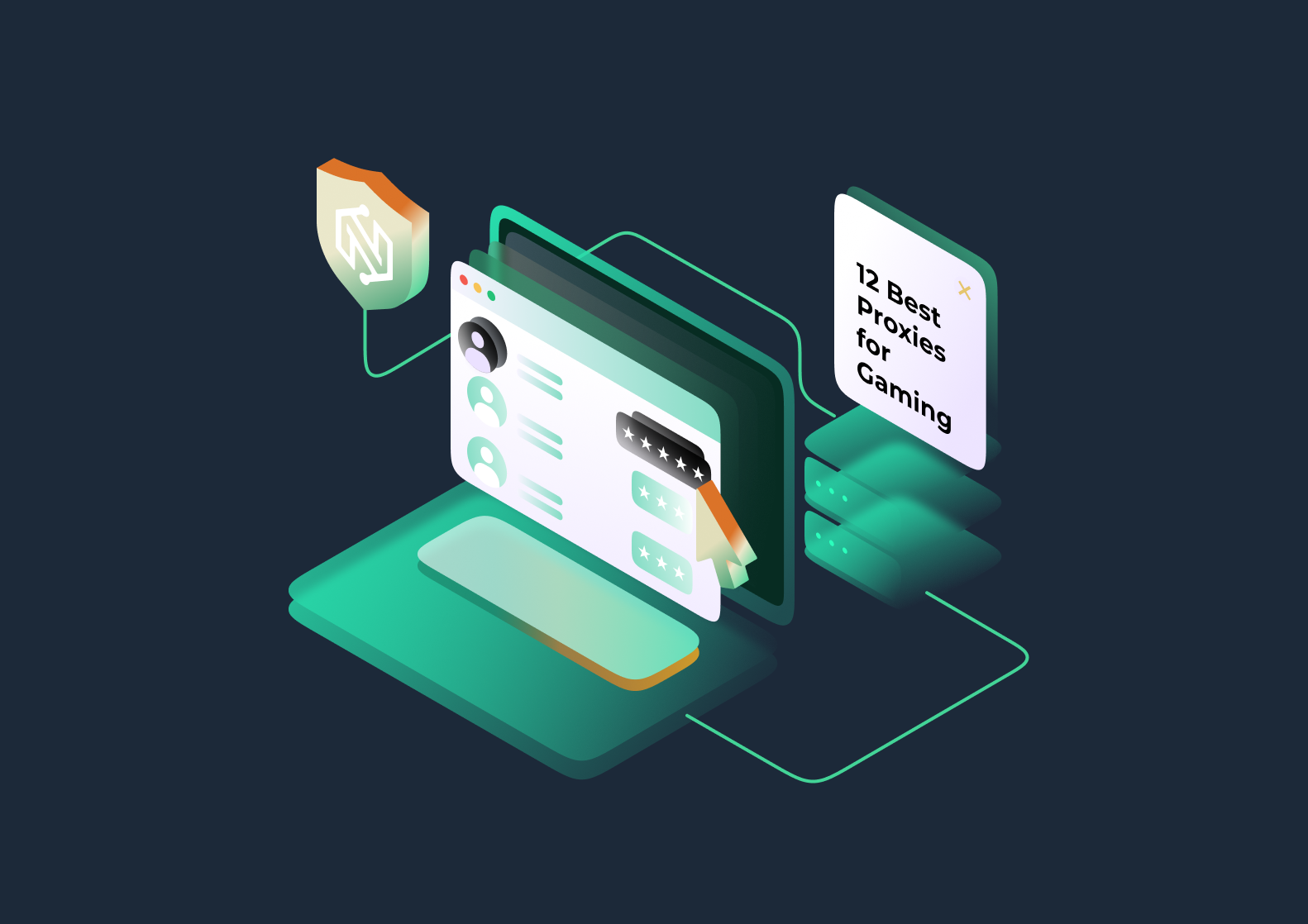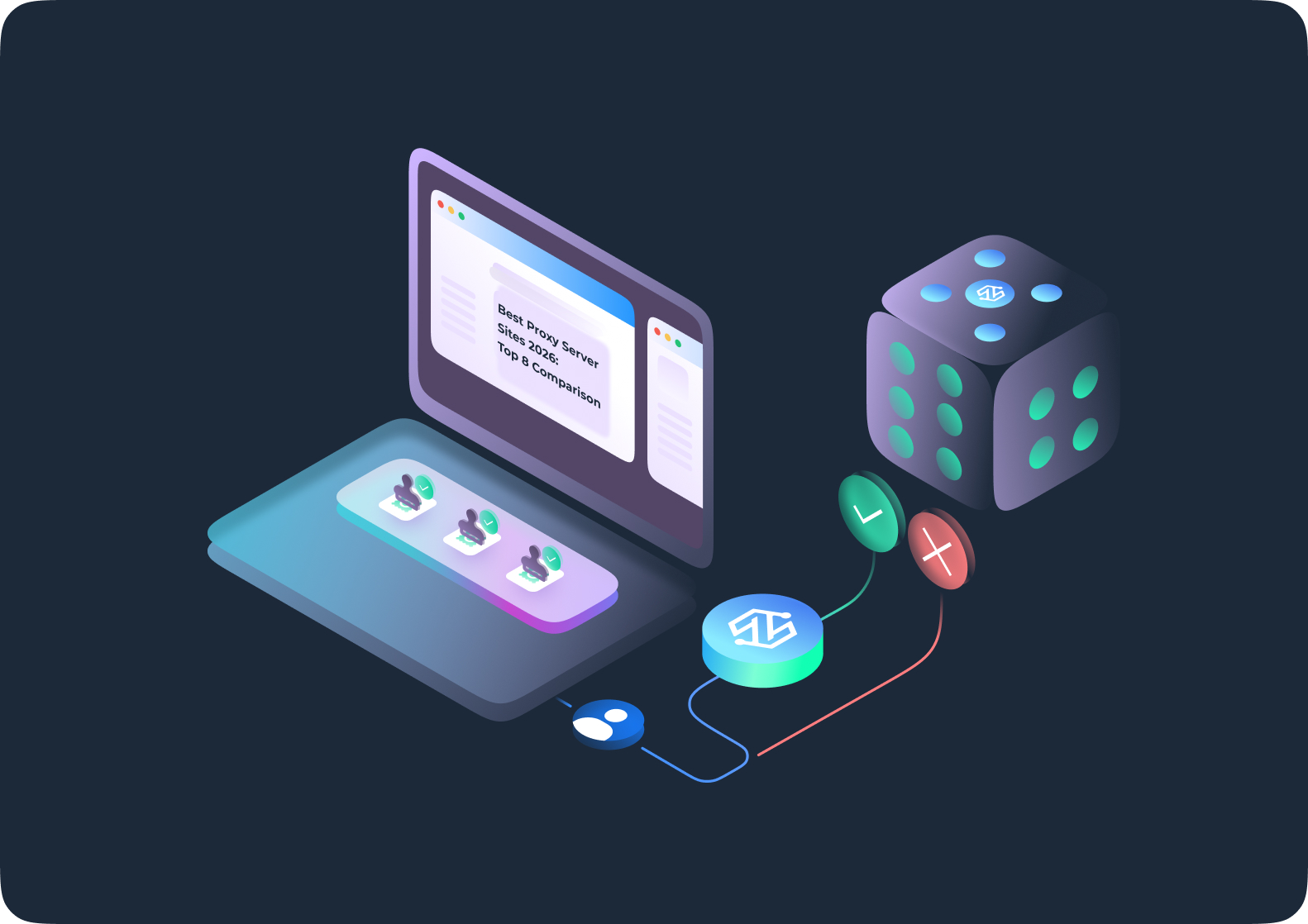If you’re serious about staying anonymous online, avoiding bans, or scaling digital operations, you’ve probably already heard of SOCKS5 proxies.
Whether you’re managing ad accounts, scraping websites, or farming accounts at scale, SOCKS5 proxies can give you that stealth edge. But not all SOCKS5 proxies are built the same.
Let’s break down what makes a SOCKS5 proxy great and which providers are crushing it in 2025.
What is a SOCKS5 Proxy?
Let’s start with the basics. SOCKS5 is a protocol that routes your traffic through a third-party server, masking your IP address, bypassing blocks, and enabling full control over internet access.
But what makes SOCKS5 unique compared to typical HTTP/HTTPS proxies?
It operates at a lower level (layer 5), which means it supports any kind of traffic, including UDP, and doesn’t interpret the data being sent. That makes it more flexible, faster, and compatible with more tools, from browsers to bots.
How to Choose the Best SOCKS5 Proxy Server
Not all SOCKS5 proxies are made equal — and if you pick the wrong one, it’s not just wasted money; it could kill your campaign, bot, or multi-account stack overnight.
Here’s what to look for when choosing the best SOCKS5 proxy server in 2025:
1. IP Type & Quality
- Residential and mobile IPs are king for stealth. They mimic real users and are harder to detect.
- Avoid cheap shared datacenter IPs unless you’re doing basic scraping or tasks with low risk.
2. Session Control
- For account creation, social automation, or purchasing flows — you need sticky sessions (NodeMaven offers up to 24h).
- For scraping or mass tasks, rotating IPs that change per request may be better.
3. Location Targeting
- Choose a provider that lets you target by country, city, or even ASN/ISP. This is key for geo-locked content or ad testing.
- Example: Want to access a US-only airdrop or run TikTok ads in Brazil? You’ll need proxies that reflect that location accurately.
4. Speed and Reliability
- Look for providers with <1% error rate, high uptime (99.9%+), and low latency. Even a minor delay can disrupt checkout bots or scraper accuracy.
- Bonus points for servers on 10Gbps lines and dedicated bandwidth.
5. Tool Compatibility
- Check for integration with Multilogin, GoLogin, Proxifier, Selenium, or whatever stack you’re using.
- SOCKS5 works with most tools, but setup ease and success rates vary by provider.
6. Pricing Transparency
- Avoid “black box” providers. Look for transparent GB/IP pricing, traffic rollover, and fair-use policies.
What is the Best SOCKS5 Proxy Provider in 2025?
We’ve tested, analyzed, and compared. Here’s the top 10 list based on trust, speed, scalability, and pricing.
1. NodeMaven
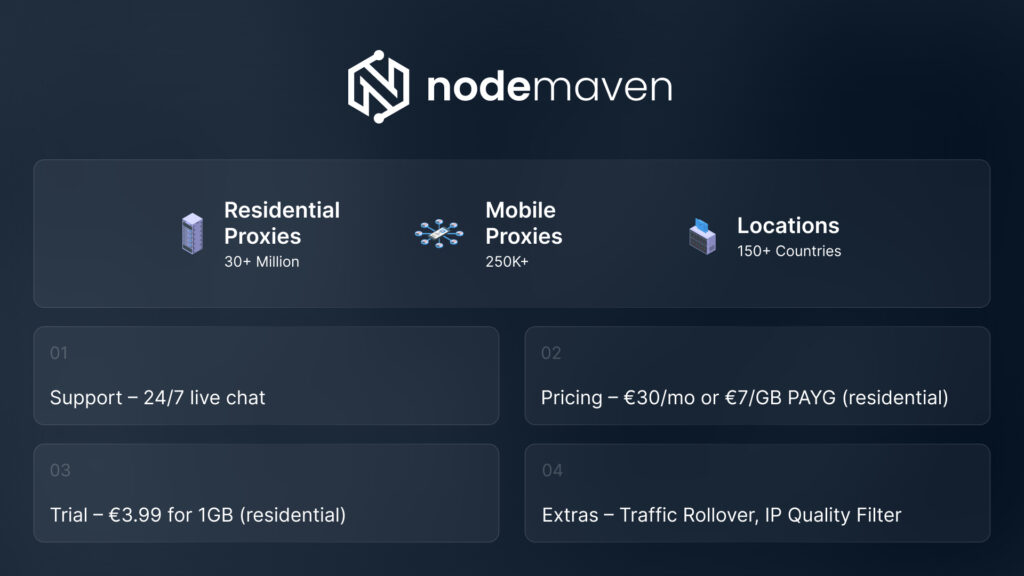
Why it stands out: NodeMaven is the digital hustler’s choice. Real mobile and residential SOCKS5 IPs, sticky sessions up to 24h, and premium filtering to block low-trust IPs automatically.
Use cases: Multilogin sessions, ad account farming, automation bots, sneaker bots, web scraping at scale.
Pro tip: The same price gets you mobile or residential SOCKS5, and you can switch between them anytime.
Check NodeMaven SOCKS5 proxies →
2. IPRoyal
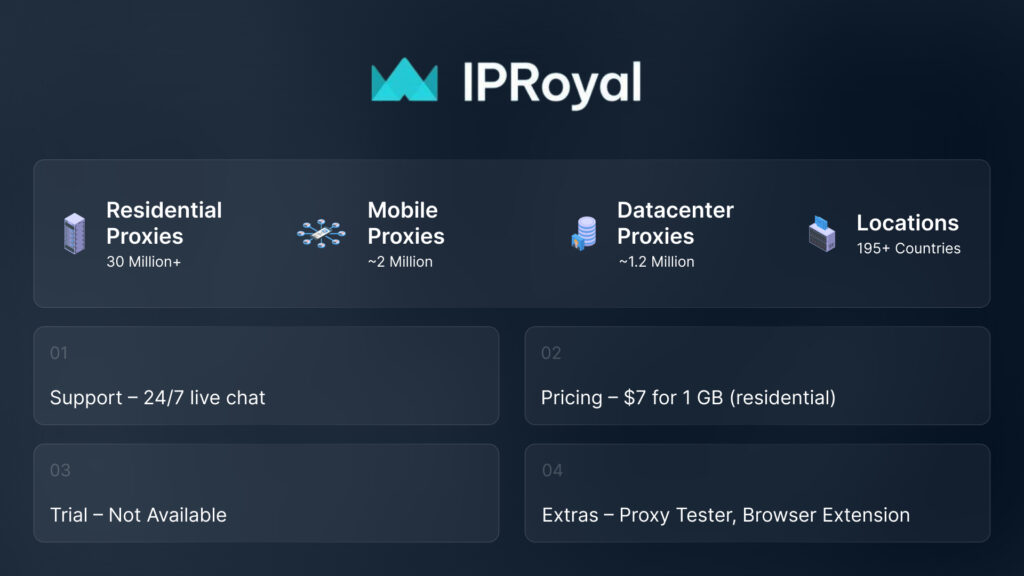
If you’re looking for affordable SOCKS5 proxies, take a look at what IPRoyal has to offer. You can choose from all proxy types: dedicated datacenter, mobile, ISP, or residential, so there’s a lot of flexibility for the projects you want to run.
The addresses have a lower success rate and response time compared to other providers on this list. Additionally, its residential proxies have a low number of unique IPs.
Good for: Web scraping, casual browsing, bypassing content restrictions.
3. Oxylabs
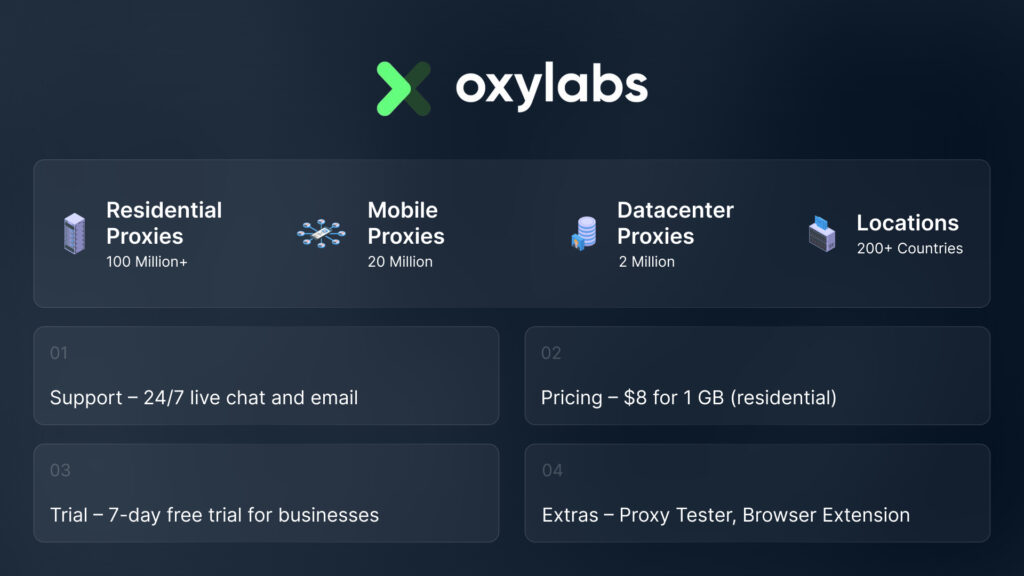
Oxylabs is the best choice if you’re looking for premium SOCKS5 proxies. The provider supports SOCKS5 protocol with residential, mobile, dedicated datacenter, and semi-dedicated ISP proxies, so you can choose the one that best suits your project.
That said, Oxylabs targets business customers, so plans might be slightly more pricey if you’re only looking for a few IPs.
Best for: Big teams doing market research, ad verification, or large-scale scraping.
4. Decodo
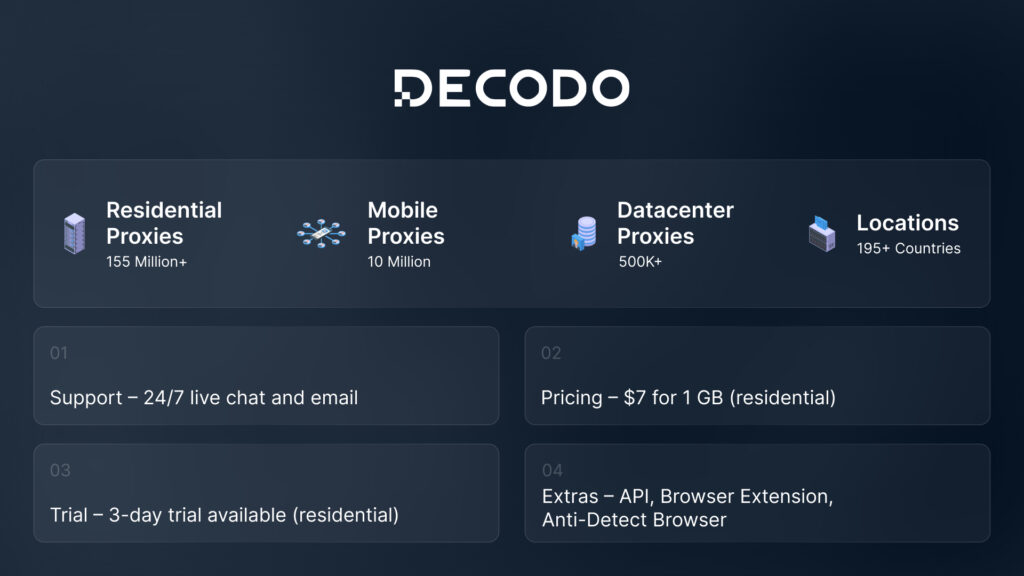
A newer player focused on high-trust residential SOCKS5 proxies. Promising for those tired of recycled pools.
What can you expect performance-wise? An almost perfect success rate and a fast response time. Besides having a robust infrastructure, the provider manages to keep mid-range prices.
Tip: Still maturing, so support and coverage can be hit or miss.
5. SOAX
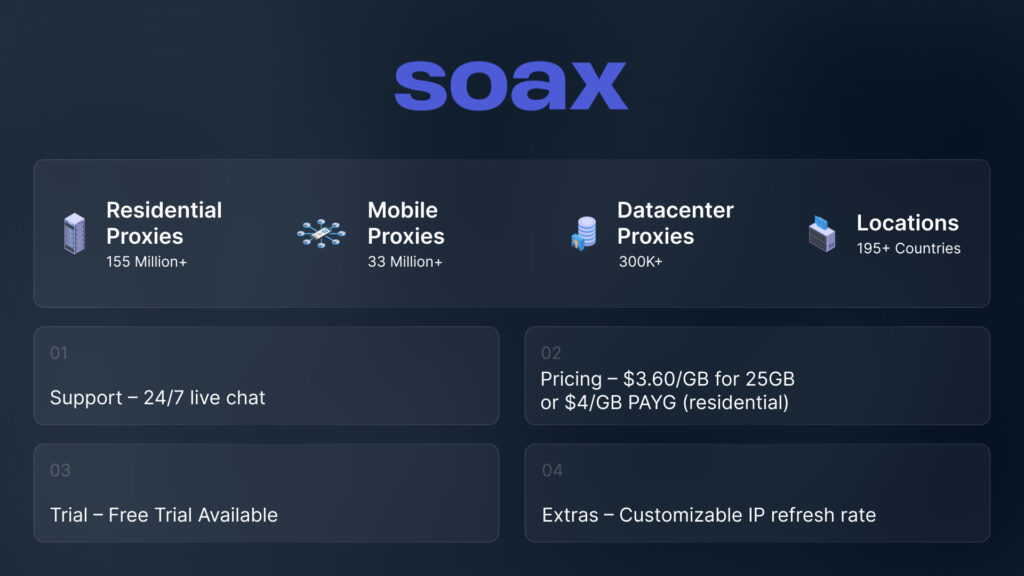
Known for flexibility. Offers granular targeting and a clean user interface for managing proxy pools.
Sadly, even with as big a proxy pool as SOAX has, our tests showed the infrastructure performance is slightly decreasing. Additionally, all of its products come with obligatory IP whitelisting.
Use case: Social media automation, especially where country-level targeting is needed.
6. Bright Data
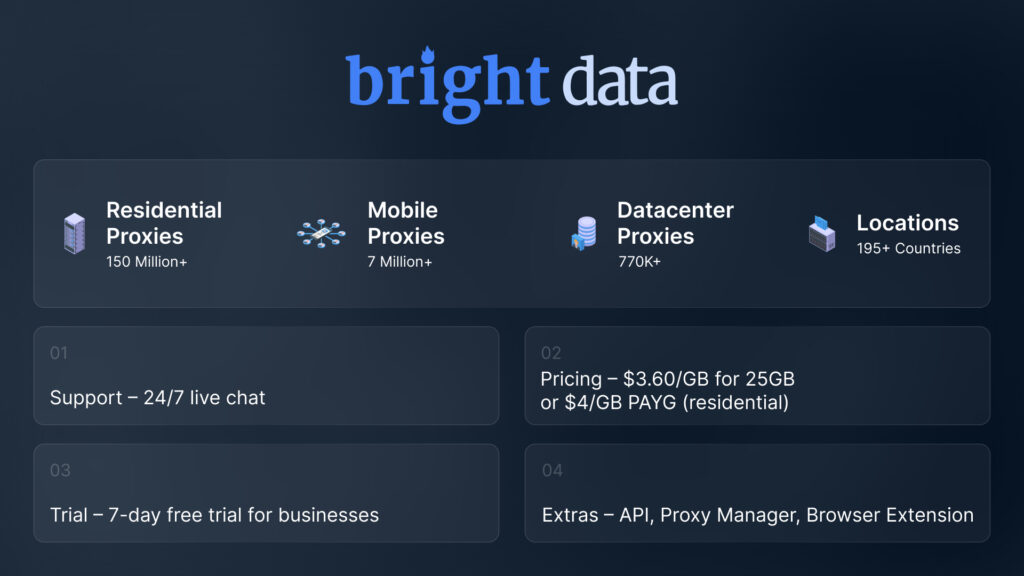
Bright Data has a well-maintained proxy network – you won’t be disappointed by the proxy performance. Most of its services have a good success rate, and a fast response time.
Bright Data’s pricing is very flexible: you can choose a monthly plan or PAYG. some features will cost you extra, though.
Not ideal for: Hustlers on a tight budget, this one’s premium-priced.
7. Webshare
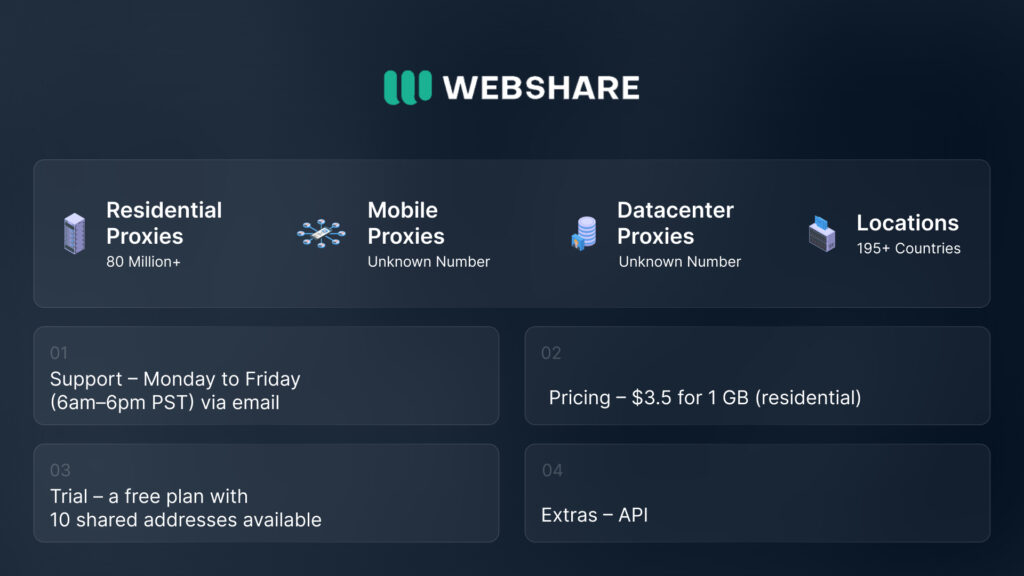
Cheap datacenter and SOCKS5 options. Their UI is easy to use but lacks serious mobile/resi IP quality.
Webshare’s strong infrastructure makes it stand out in the market. Its datacenter and ISP proxies are fast and stable. you’re offered a complete self-service – it gives you full control over your subscription.
You can decide on the number of proxies, their locations, and otherwise customize the service by adding traffic, concurrency, or reserving network priority.
Use case: Bulk scraping where stealth isn’t the top concern.
8. Infatica
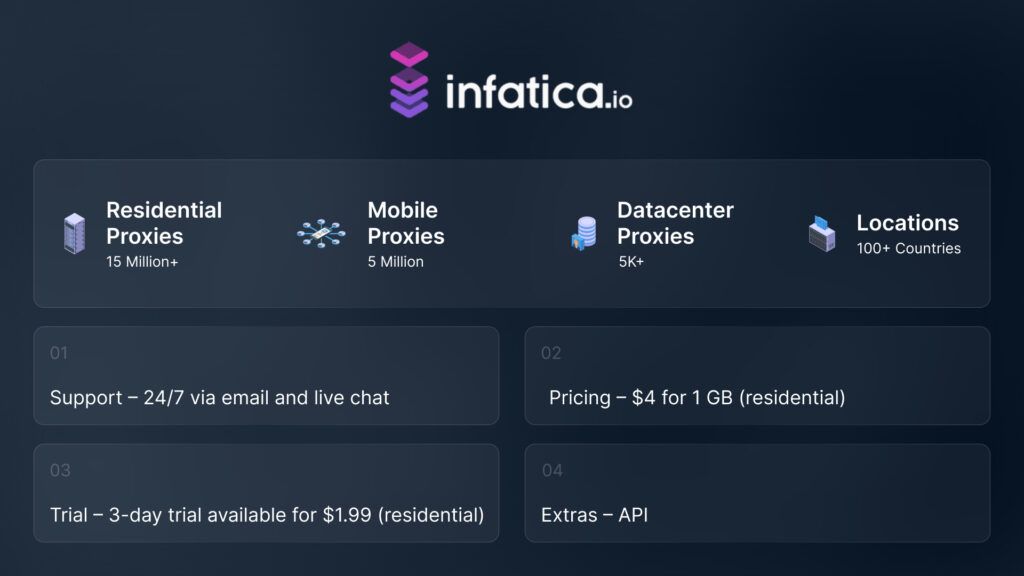
Balanced offering of residential and mobile SOCKS5 proxies with flexible rotation. Strong in Asia-Pacific regions.
The main drawbacks – pricing and lack of user experience. The provider’s dashboard lacks clarity. For example, you won’t be able to see traffic use in the main page – you’ll have to dig deep to find it.
9. ProxyEmpire
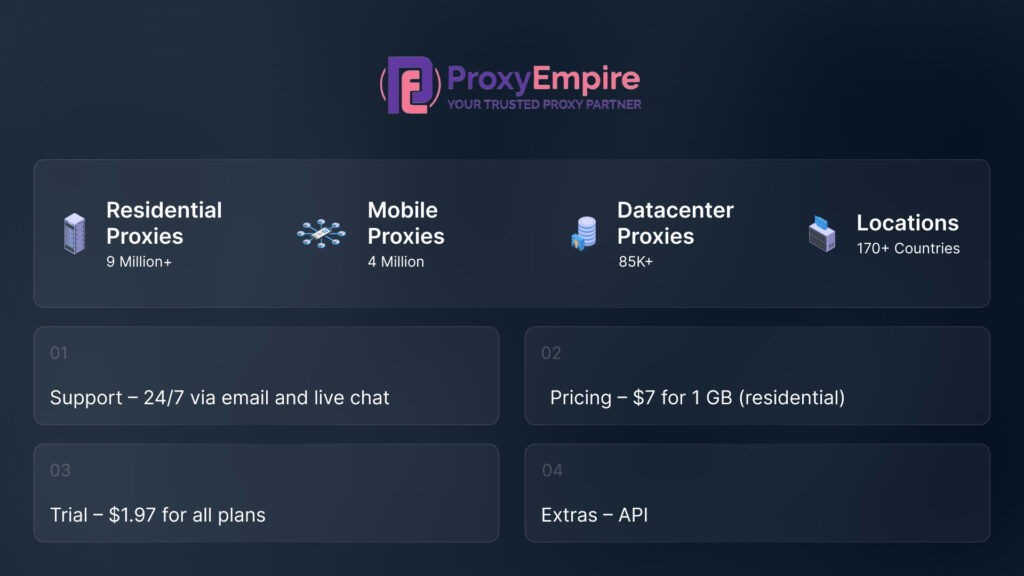
GEO-focused provider with some strong features for targeting cities and ISPs.
Use case: Ads, localized scraping, e-commerce market research.
10. Rayobyte

Rayobyte has built an impressive infrastructure of datacenter proxies. Pretty much unlimited and well kept, they send a strong statement both to mid-range and premium proxy competitors
Rayobyte caters to individuals and small-medium businesses, so the prices are around the market’s average or lower if you buy more traffic.
Use case: API-first teams scraping web data with dynamic logic.
Are SOCKS5 Proxies Enough for Multi-Account Management?
Managing multiple accounts on platforms like TikTok, Instagram, or Gmail? SOCKS5 proxies get you part of the way there, but there’s a catch.
Platforms today use browser fingerprints, cookies, and behavioral data. SOCKS5 proxies hide your IP, but not your fingerprint. That’s why most serious users combine SOCKS5 proxies with anti-detect browsers like Multilogin or Incogniton.
Tip: Use one SOCKS5 IP per browser profile. Never reuse the same IP across different accounts.
How Does a SOCKS5 Proxy Work?
Think of a SOCKS5 proxy as your online stunt double, it takes your place, does the dirty work, and leaves no fingerprints.
Here’s the simple flow:
Your app or browser → SOCKS5 proxy → Target website
The target sees the proxy’s IP, not yours. And unlike HTTP proxies that only work for web traffic, SOCKS5 proxies can handle any protocol, including UDP, making them perfect for:
- Email clients
- VOIP tools
- Game servers
- Scraping APIs
- Automation bots
Why SOCKS5 is More Flexible:
- It doesn’t care what data is being transmitted — it just relays it, untouched.
- That makes it faster, more private, and compatible with nearly every app.
- And because it doesn’t modify headers or payloads, it’s harder for anti-bot systems to flag.
Example: Running a TikTok automation farm? With SOCKS5, each browser instance routes through a different IP, each with its own city and ISP fingerprint. The platform thinks it’s dozens of real users across the globe.
In short: SOCKS5 is the proxy format of choice for digital hustlers who want to move fast, stay hidden, and scale up.
How to Use a SOCKS5 Proxy?
Here’s a simple setup flow:
- Choose a tool: Proxy clients like Proxifier, anti-detect browsers, or automation tools (e.g., Puppeteer).
- Enter SOCKS5 credentials: Usually involves host, port, username, and password.
- Test the connection: Use sites like whatismyipaddress.com to verify the proxy is active.
- Launch your app or bot: Whether it’s scraping, posting, or buying, your traffic will be routed via the SOCKS5 proxy.
Pro tip: Use IP-checking APIs in your scripts to dynamically verify the current proxy before running a task.
Pros and Cons of SOCKS5 Proxies
Let’s be real, no tool is perfect. Here’s where SOCKS5 shines, and where it might fall short:
Pros
- Fast and lightweight (doesn’t interpret traffic)
- Supports more protocols (like UDP)
- More anonymous than HTTP proxies
- Compatible with most apps and scripts
Cons
- No built-in encryption (unlike a VPN)
- Needs manual setup in most apps
- Doesn’t spoof fingerprint or headers
- Quality varies widely by provider
Why You Shouldn’t Buy Free SOCKS5 Proxies
Here’s the ugly truth: free SOCKS5 proxies are almost always a trap.
- Shared abuse: They’re often blacklisted because others have used them for spam or hacking.
- Logged traffic: Some free proxies monitor or sell your data.
- Slow and unreliable: You’ll get dropped mid-session or experience crawling speeds.
Example: You set up a TikTok automation farm using free SOCKS5 proxies and get banned within hours because those IPs were flagged last week. That’s a headache you don’t want.
Stick with trusted providers, especially ones that filter bad IPs like NodeMaven’s Quality Filter.
Final Verdict: Choosing the Best SOCKS5 Proxy Wisely
If you’re scraping data, running automation, or managing multiple accounts, SOCKS5 proxies are essential. But don’t just grab the first provider you see.
Here’s the playbook:
- Pick SOCKS5 if you need raw speed, protocol flexibility, and stealth.
- Use real-user IPs (residential or mobile) for trust-sensitive platforms.
- Pair proxies with anti-detect browsers or bot platforms for full-stack anonymity.
- Avoid free proxies — they’re poison for serious projects.
And if you want that perfect mix of performance, stability, and scalability, NodeMaven is where the top digital hustlers go to win.
Frequently Asked Questions (FAQs)
- Go to Settings > Wi-Fi
- Tap the (i) next to your network
- Scroll to Proxy > Manual
- Enter your SOCKS5 server IP, port, and credentials
- Residential SOCKS5: $3–$8/GB
- Datacenter SOCKS5: $0.20–$2/IP
- Mobile SOCKS5: ~$100/month (slot-based)
- Choose a trusted provider
- Select your proxy type (residential, mobile, datacenter)
- Choose location, session length, and volume
- Complete payment
- Get proxy credentials and setup instructions via dashboard or email
curl or telnet.
You can also test in your browser by configuring it and loading any IP-echo site to confirm your new IP appears.
- Choose your tool: browser, Proxifier, anti-detect browser, etc.
- Enter the proxy server address, port (usually 1080), and login credentials
- Save the configuration and test with an IP-check tool
- Many tools also let you define rotation rules or fallback proxies.
